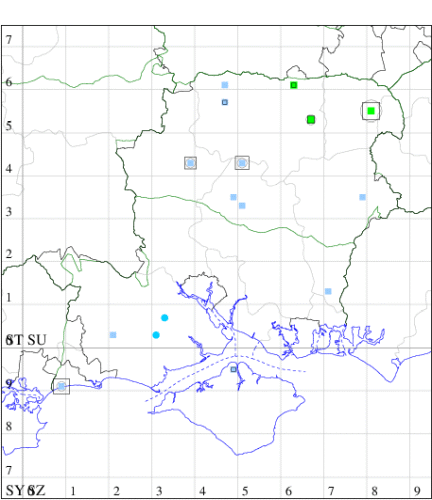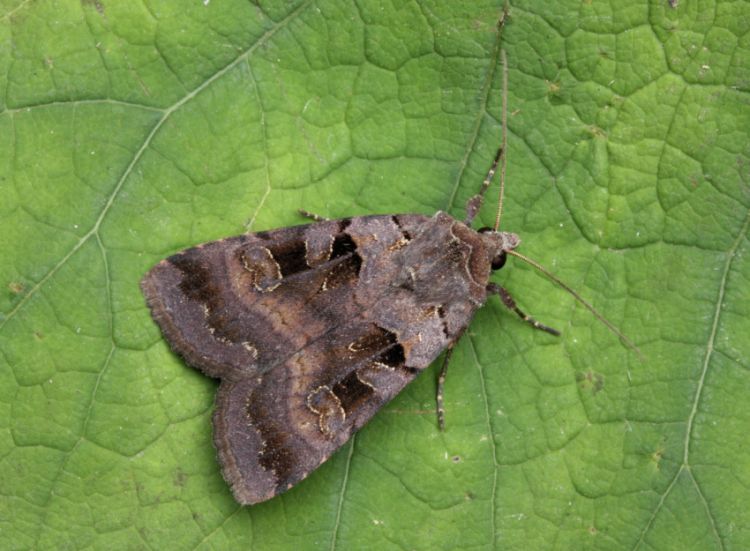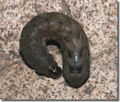Square-spotted Clay
Xestia stigmatica
Checklist Number73.354 [B&F: 2131]
Verification
Record requires retention of specimen until confirmed, and may require dissection. Consult with CMR if unsure
Nationally scarce (Nb), declining, in ancient broad-leaved woodland, woodland clearings and scrub. Since 1980 the main areas have been the Chiltern beechwoods of Oxfordshire, Buckinghamshire and Berkshire, and acidic, thin-soiled areas around Guildford and Reading, the Brecklands of Norfolk and Suffolk, and the North Yorkshire Moors. In Hampshire, there are very few records, the most recent being one in the Loddon Valley at Old Basing in 2004. In the past, it was stated to be locally fairly common, e.g. Brockenhurst, Farley Mount and Michelmersh v.c.11, Harewood Forest and Micheldever v.c.12. There are no recent records from the Isle of Wight. Wingspan 37-44mm. Distinguished from Triple-spotted Clay X. ditrapezium by its broader wing-shape, duller colour and the absence of a subapical spot on the forewing (MBGBI Vol 9). A good photograph or specimen is required for this species to be considered for acceptance. Larva feeds on Stinging Nettle, Dog's Mercury and Oxlip.


The abundance in each month is indicated as follows:
 No records
No records Very occasional
Very occasional Irregular
Irregular Uncommon
Uncommon Off-peak, but not unusual
Off-peak, but not unusual Off-peak, but not unusual
Off-peak, but not unusual Main flight time
Main flight time| J | F | M | A | M | J | J | A | S | O | N | D | |
|---|---|---|---|---|---|---|---|---|---|---|---|---|
| Adult |  |  |  |  |  |  |  |  |  |  |  |  |
| Larval |  |  |  |  |  |  |  |  |  |  |  |  |
Records by week (adult)
Records by week (larval)
VC10 Isle of Wight
| Site | Date | Quantity | Recorder | Stage |
|---|---|---|---|---|
| Cowes (SZ49) | 1949 | one | C W Pierce | Adult |
VC11 South Hampshire
| Site | Date | Quantity | Recorder | Stage |
|---|---|---|---|---|
| Denny Wood, NF (SU30) | 01/07/1983 | - | Anon | - |
| Standing Hat (SU30) | 01/08/1983 | - | Anon | - |
VC12 North Hampshire
| Site | Date | Quantity | Recorder | Stage |
|---|---|---|---|---|
| Harewood Forest (SU34) | 07/08/1931 | six | CH Dixon | Adult |
| Old Burghclere (SU45) | 1950 | one | Robert Saundby | Adult |
| Micheldever (SU54) | 1953 | eight | CH Dixon | Adult |
| Old Basing (SU65) | 07/08/2004 | one | Tim Norriss | Adult |
| Fleet (SU85) | 15/09/2006 | seven | Graham Stephenson | Adult |
| Fleet (SU85) | 27/09/2006 | one | Graham Stephenson | Adult |
| Pamber Forest (SU66) | 06/08/2009 | one | Graham Dennis | Adult |




